Eriu: Powerful Irish Goddess And Sacred Uisneach Hill Where She And God Lugh Are Buried
A. Sutherland - AncientPages.com - Eriu (also known as Éire or Erin), was the Irish goddess of earth, according to ancient beliefs.
In ‘The Book of Invasions’ (or the “Book of Conquests”), the 11th-century work based on poems, narrative prose, and oral traditions related to the legendary history of Ireland, is written that Eriu and her two sisters, Banba, Fótla were a trio of queen-goddesses.
During the Milesian Invasion, the sister-goddesses were married to the three Danaan kings of the Tuatha Dé Danann: Mac Grené (‘Son of the Sun’), Mac Cuill (‘Son of Hazel’), and Mac Cécht (‘Son of the Plough’).
The three Danann kings were grandsons of the Dagda, god of life and death and chief of the Tuatha De Danann.
At different times, each of the names of the three sister-goddesses (Banba, Fótla and Eriu) have been applied to Ireland, of which the last surviving is “Erin” and is related to Eriu, a member of the Tuatha de Danann, Ireland's original gods.
Along with her two sisters, Eriu was the Irish goddess of sovereignty. Her name has often been associated with soil, earth, and the land of abundance.
Arrival Of The Milesians
The “Book of Invasions” says that the Milesians, the last mythical invaders of Ireland and the true Gaelic people of Ireland, arrived on Ireland’s shores. Shortly after their arrival, they met three sisters, all goddesses of the land, each of whom asked that the island be called after her. The sorceress Banba made her demand from the top of her favorite mountain and so did Fódla, when the invaders approached her mountain. Finally, the Milesians met the glorious Eriu who greeted them at the sacred mountain, Uisneach.
She made the same demands as her sisters but promised much more than Banba and Fódla did.
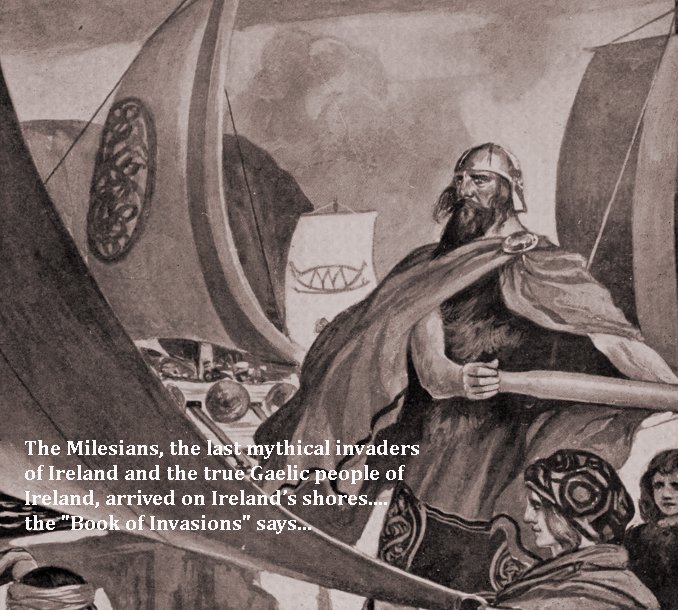
"The Coming of the Sons of Miled", illustration by J. C. Leyendecker in T. W. Rolleston's Myths & Legends of the Celtic Race, 1911
The Milesian chief decided to call the island after Eriu, whose prophecy she proclaimed was the most favorable.
Legend has it that the names of her two sisters were occasionally used as poetic names for Ireland.
Eriu Related To Different Deities
In different texts, Eriu is associated with the Fomorians, the great god Dagda, and Lugh, one of the greatest heroes. Eriu fell in love with a Fomorian king named Elatha, the son of Fomorian Delbáeth (son of Neit). Most Fomorians were usually very ugly and deformed, but Elatha was a handsome man.
It is said that Elatha seduced Eriu, and she became the mother of their son, Bres. Elatha gave her a ring so that he would later recognize his own son, who became the half-Fomorian king. It is also believed that Eriu was the lover of the hero Lugh.
Powerful Divine Eriu Controlled Lands And Seas
In ‘The Encyclopedia of Celtic Mythology and Folklore’, Patricia Monaghan mentions one legend about the invasion of the Milesians and a man, Donn mac Miled, also known as Éber Donn ("Dark or Brown Éber"). The man was a malevolent and envious figure who, at the meeting between the Milesians and the goddess Eriu, replied to Eriu's demands with insults. Eriu responded to his humiliations and calmly sentenced him to death.
He drowned shortly thereafter.
The Hill of Uisneach, Eriu's Divine Place
The place is considered to be a mythological and sacred center of Ireland.
Uisneach's most famous feature is the so-called Catstone ("Ail na Mireann"—the stone of divisions). It is also known as 'Umbilicus Hinerniae' -Axis Mundi and the navel of Ireland. Under this sacred stone, Eiru, the powerful goddess of Ireland after whom the country is named, was laid to rest.
The sacred place, also known as ‘Axis Mundi’ and ‘the Naval of Ireland,’ is also the burial site of the famous hero, the sun god Lugh. Historically, Uisneach was believed to be a gate to the mythical fifth province, Mide, which held Ireland's four more familiar provinces together.
Even today, this enigmatic hill, which stands just 596 feet above sea level, is one of the world's most sacred and historic sanctuaries.
Updated on June 23, 2024
Written by – A. Sutherland - AncientPages.com Senior Staff Writer
Copyright © AncientPages.com All rights reserved. This material may not be published, broadcast, rewritten or redistributed in whole or part without the express written permission of AncientPages.com
Expand for referencesReferences:
Sian Echard S, Rouse R, Jacqueline A. Fay J.A, Fulton H. Rector G. The Encyclopedia of Medieval Literature in Britain
Williams M. Ireland's Immortals
More From Ancient Pages
-
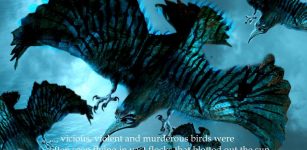 Mythical Stymphalian Birds: Terrible Winged Maidens With Birds’ Feet
Featured Stories | Feb 27, 2017
Mythical Stymphalian Birds: Terrible Winged Maidens With Birds’ Feet
Featured Stories | Feb 27, 2017 -
 Vikings’ Encounters With Peculiar White-Dressed Humanoids And Cave Dwellers In Unknown Lands Described In Norse Sagas
Featured Stories | Sep 5, 2024
Vikings’ Encounters With Peculiar White-Dressed Humanoids And Cave Dwellers In Unknown Lands Described In Norse Sagas
Featured Stories | Sep 5, 2024 -
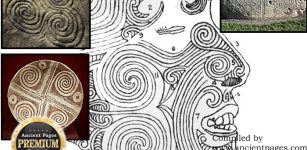 Secrets Of The Spiral Symbol Left By Ancient Civilizations
Featured Stories | Mar 19, 2025
Secrets Of The Spiral Symbol Left By Ancient Civilizations
Featured Stories | Mar 19, 2025 -
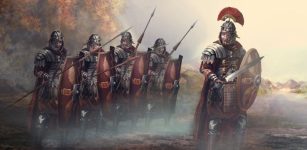 War Between Romans And Persians Lasted 721 Years: One Of The World’s Longest Human Conflicts In History
Featured Stories | Apr 18, 2022
War Between Romans And Persians Lasted 721 Years: One Of The World’s Longest Human Conflicts In History
Featured Stories | Apr 18, 2022 -
 Mysterious Pyramid-Shaped Tomb Discovered In China
Archaeology | Mar 15, 2017
Mysterious Pyramid-Shaped Tomb Discovered In China
Archaeology | Mar 15, 2017 -
 Sweden’s Blue Maiden ‘Blåkulla’ Island – Mythical Place With Dark Secrets Of Witches And Wizardry
Places | Sep 23, 2015
Sweden’s Blue Maiden ‘Blåkulla’ Island – Mythical Place With Dark Secrets Of Witches And Wizardry
Places | Sep 23, 2015 -
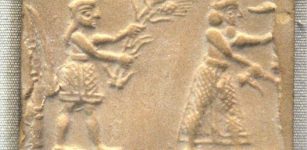 Who Was The Sumerian Ensi?
Featured Stories | Jan 24, 2020
Who Was The Sumerian Ensi?
Featured Stories | Jan 24, 2020 -
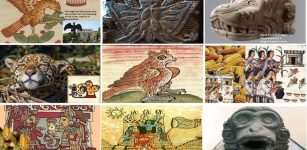 10 Aztec Symbols Explained
Ancient Symbols | Mar 20, 2018
10 Aztec Symbols Explained
Ancient Symbols | Mar 20, 2018 -
 Tool Patterns Reveal What Caused The Neanderthals’ Extinction In The Iberian Peninsula
Archaeology | Mar 30, 2022
Tool Patterns Reveal What Caused The Neanderthals’ Extinction In The Iberian Peninsula
Archaeology | Mar 30, 2022 -
 On This Day In History: Dryburgh Abbey One Of Most Beautiful Of All Border Abbeys Of Scotland Founded – On Nov 10, 1150
News | Nov 10, 2016
On This Day In History: Dryburgh Abbey One Of Most Beautiful Of All Border Abbeys Of Scotland Founded – On Nov 10, 1150
News | Nov 10, 2016 -
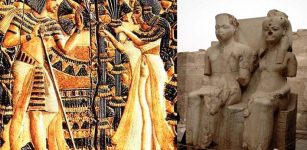 Ankhesenamun – Mysterious Death Of Tutankhamun’s Wife Ended The True Amarna Bloodline
Featured Stories | Mar 23, 2018
Ankhesenamun – Mysterious Death Of Tutankhamun’s Wife Ended The True Amarna Bloodline
Featured Stories | Mar 23, 2018 -
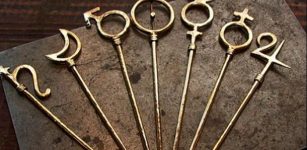 Number ‘Seven’: Mystical Number Of The Universe And One Of The Most Sacred Numbers
Ancient Symbols | Feb 14, 2017
Number ‘Seven’: Mystical Number Of The Universe And One Of The Most Sacred Numbers
Ancient Symbols | Feb 14, 2017 -
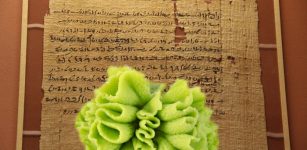 Wasabi Plant Can Save Ancient Bio-Deteriorated Papyrus
Scripts, Paintings & Inscriptions | Apr 4, 2024
Wasabi Plant Can Save Ancient Bio-Deteriorated Papyrus
Scripts, Paintings & Inscriptions | Apr 4, 2024 -
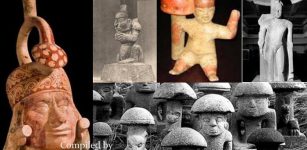 Mysterious Ancient Mushrooms In Myths And Legends: Sacred, Feared And Worshiped Among Ancient Civilizations
Featured Stories | Apr 26, 2023
Mysterious Ancient Mushrooms In Myths And Legends: Sacred, Feared And Worshiped Among Ancient Civilizations
Featured Stories | Apr 26, 2023 -
 Maximilien de Robespierre: A True Revolutionary Man Or A Madman?
Featured Stories | Dec 22, 2015
Maximilien de Robespierre: A True Revolutionary Man Or A Madman?
Featured Stories | Dec 22, 2015 -
 Enigma Of Mount Ararat – Researchers Are Determined To Reveal The Truth To The World
Featured Stories | Jun 27, 2014
Enigma Of Mount Ararat – Researchers Are Determined To Reveal The Truth To The World
Featured Stories | Jun 27, 2014 -
 Stamp Suggests The Iconic Sutton Hoo Helmet Was Made In Denmark, Potentially Rewriting Early European History
Archaeology | Mar 28, 2025
Stamp Suggests The Iconic Sutton Hoo Helmet Was Made In Denmark, Potentially Rewriting Early European History
Archaeology | Mar 28, 2025 -
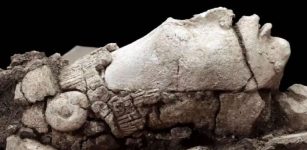 1,300-Year-Old Mayan Maize God Sculpture Found in Palenque, Mexico
Archaeology | Jun 2, 2022
1,300-Year-Old Mayan Maize God Sculpture Found in Palenque, Mexico
Archaeology | Jun 2, 2022 -
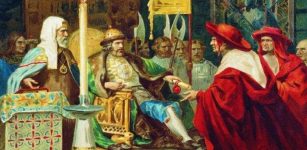 Alexander Nevsky: Grand Prince Of Novgorod, Skilled Fighter, Quick–Thinking Strategist Who Defeated Swedish And German Invaders
Featured Stories | Feb 22, 2019
Alexander Nevsky: Grand Prince Of Novgorod, Skilled Fighter, Quick–Thinking Strategist Who Defeated Swedish And German Invaders
Featured Stories | Feb 22, 2019 -
 DNA From 35,000-Year-Old Romanian Skull Reveals Flaws In The Theory Of Evolution
Archaeology | May 25, 2021
DNA From 35,000-Year-Old Romanian Skull Reveals Flaws In The Theory Of Evolution
Archaeology | May 25, 2021

